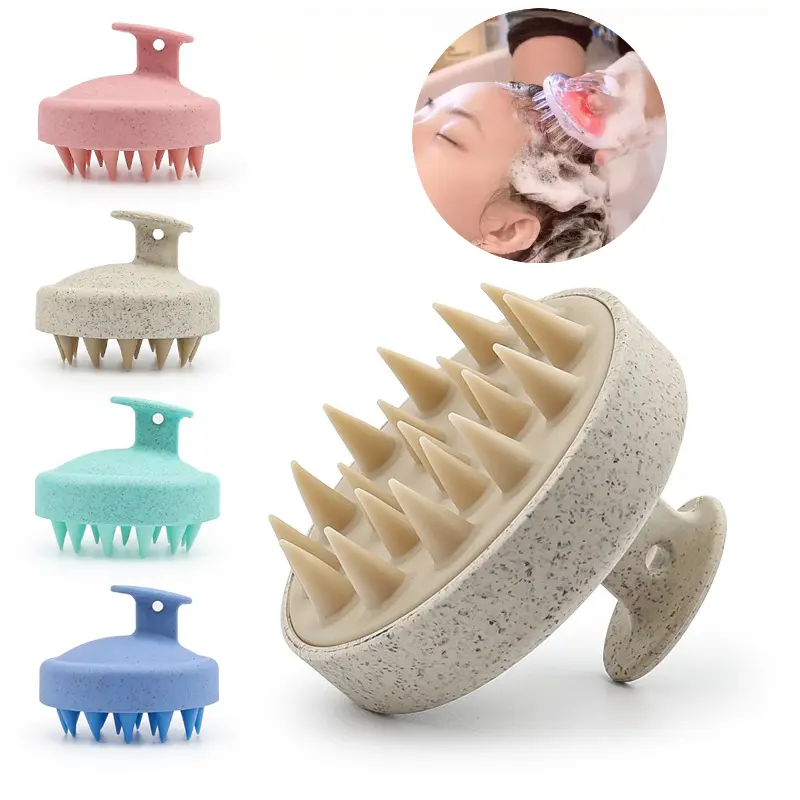Search
1/9
₱85.12
₱106.40-20%
BOLEH Sensory Brush, Sensory Therapy Brush For Autisme, ADD,Hyperactive, wilbarger Protocol, Therapressure Tactile brush sensory brush early education training equipment baby bath massage brush
Sold by whale preferred mall
4.2(5)
38 sold
Select options
Select
Shipping
From ₱40.00
Est. delivery by Apr 21 - Apr 25
Customer reviews (5)

g**7
Item: Pink
The product doesn't match the description.
Bogus seller
Waste of time to refund.

November 20, 2024
l**v
Item: Blue
Ganda😊
June 17, 2024

V**6
Item: Orange
Nice
February 14, 2025

J** R**z
Item: White
Ok
February 15, 2025

**
Item: Pink
na
October 8, 2024

whale preferred mall
228 items
Shop performance
Better than 86% of other shops
Ships within 2 days
91%
Responds within 24 hours
100%
Product description
Important: The face, chest, and stomach area are never brushed because these are very sensitive areas. Brushing these areas may cause adverse reactions including vomiting.
The 15-minute sesu15 brushing (sensory brushing)
Among the earliest assignments given by the therapist after dianogsis.
Sharing under customer and future customer:
The following is the recommended brushing sequence:
1. start with the fingertips of the right hand, the brush reaches the shoulder (up and down). Repeat by 10x.
2. brush the back from the right shoulder to the left shoulder and vice versa (scapula to scapula). Repeat by 10x.
3. brush the back of the body shaped like "W". Avoid the spinal part (spine).
4. connect brushing on left hand. Repeat step #1
5. brush the left leg from the knee to the tip of the finger in count 10.
6. Repeat step #5 for right foot anyway
7. suforehead with joint compression activity in the opposite sequence of steps above. The compression joint will end with the right hand finger joint.
This oval shaped brush is easier to use than regular sensory brushes in that it comes with an attached handle and has a more ergonomic design that makes it fit comfortable in your hand.
For specific instructions on brushing therapy its best to speak with an occupational therapist or therapist trained in the Wilbarger Protocol.
The Therapressure brush is the preferred brush for the Wilbarger protocol.
🚼Suitable for KANAK-KANAK:
⚠ ADHD
⚠ Autism
⚠Sensory processing problems/sensory processing disorder (SPD)
⚠Difficult-controlled behavior
The brushing therapy is initially recommended every 2 hours while the child is awake. Therapists usually re-assess the level of brushing after two weeks. At that time they may modify the program. The brushing continues as long as the individual benefits from it. This program may be a part of sensory integration therapy in which case the child will also be directed to work with a variety of sensory toys and tools.
After the brushing therapy, therapists may also prescribe gentle joint compressions to the shoulders, elbows, wrists, fingers, hips, knees/ankles, and sternum for a count of ten. Self-administration of joint compression by the client can also be done by pushing against walls, doing jumping-jacks, push-ups, or jumping on a trampoline.
If you think that your child would benefit from the Wilbargar Protocol, it is important to seek guidance from an Occupational Therapist. The OT must be trained in sensory integration and must be specifically trained to use the Wilbargar Protocol. Performing the therapy in a manner other than taught by a trained professional may not be effective and can be very uncomfortable for the individual.
Videos for this product
Explore more from whale preferred mall





4.7
7262sold
₱19.00
₱38.00




No more products
Open TikTok














![[1 Pc/Pack] Menstrual Period Herb Pain Relief | Heat Warm Patch | Dysmenorrhea Conditioning Chinese Medicine Nuan-Gong-Tie | Argy Wormwood Motherwort | Soothing Menstrual Pain, Dispelling Cold and Warming the Palace](https://p16-oec-va.ibyteimg.com/tos-maliva-i-o3syd03w52-us/d10788f0e5734413abf42dd0a8abf7ab~tplv-o3syd03w52-crop-webp:800:800.webp?dr=15592&from=2378011839&idc=maliva&ps=933b5bde&shcp=e1be8f53&shp=8dbd94bf&t=555f072d)





















